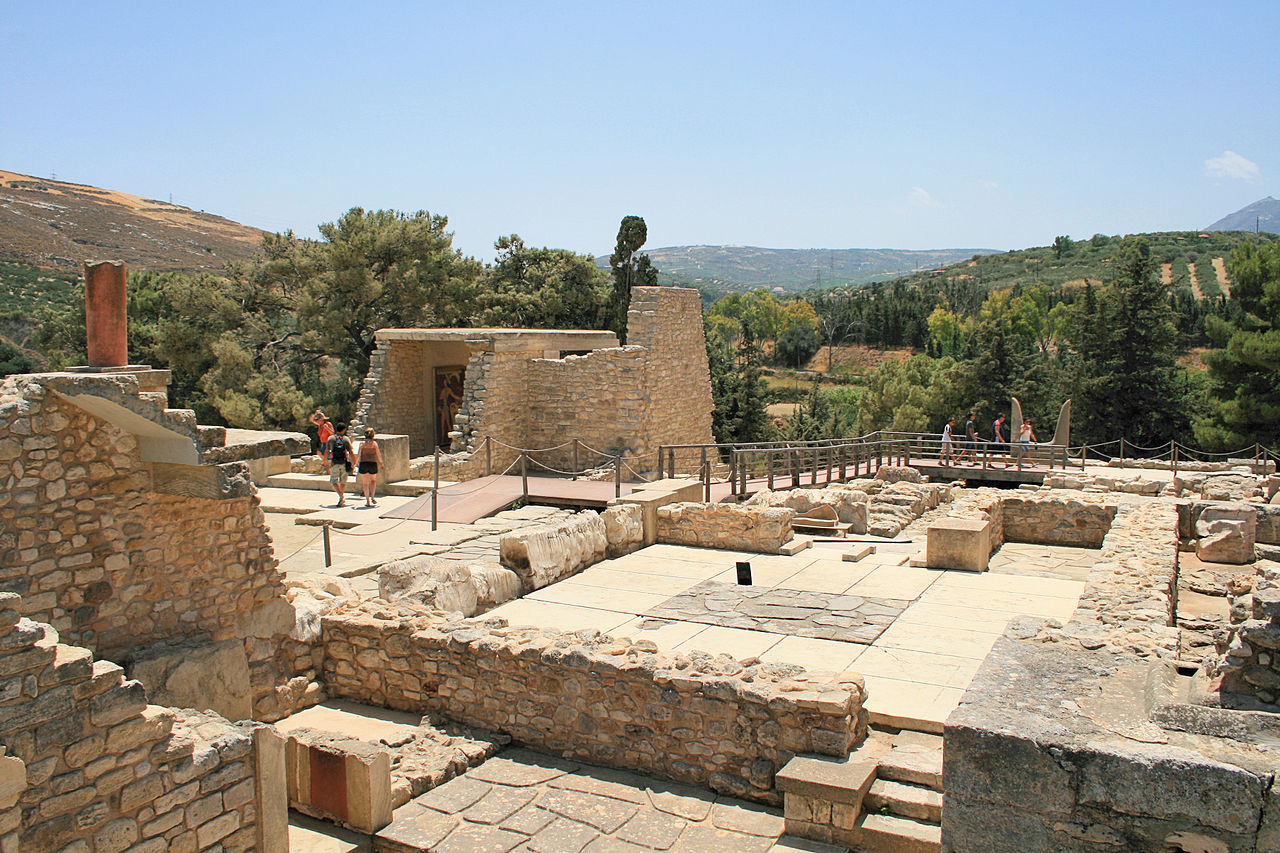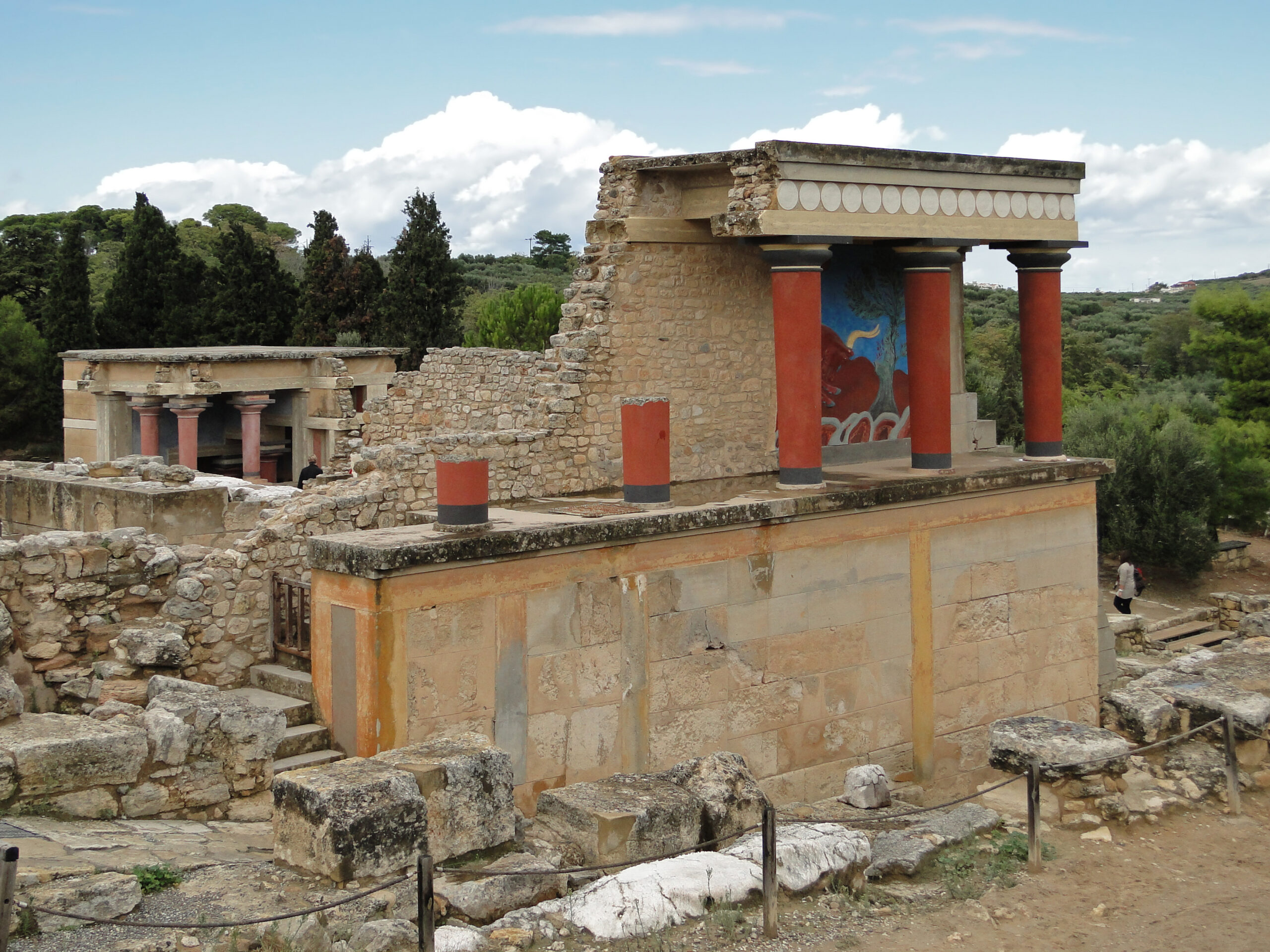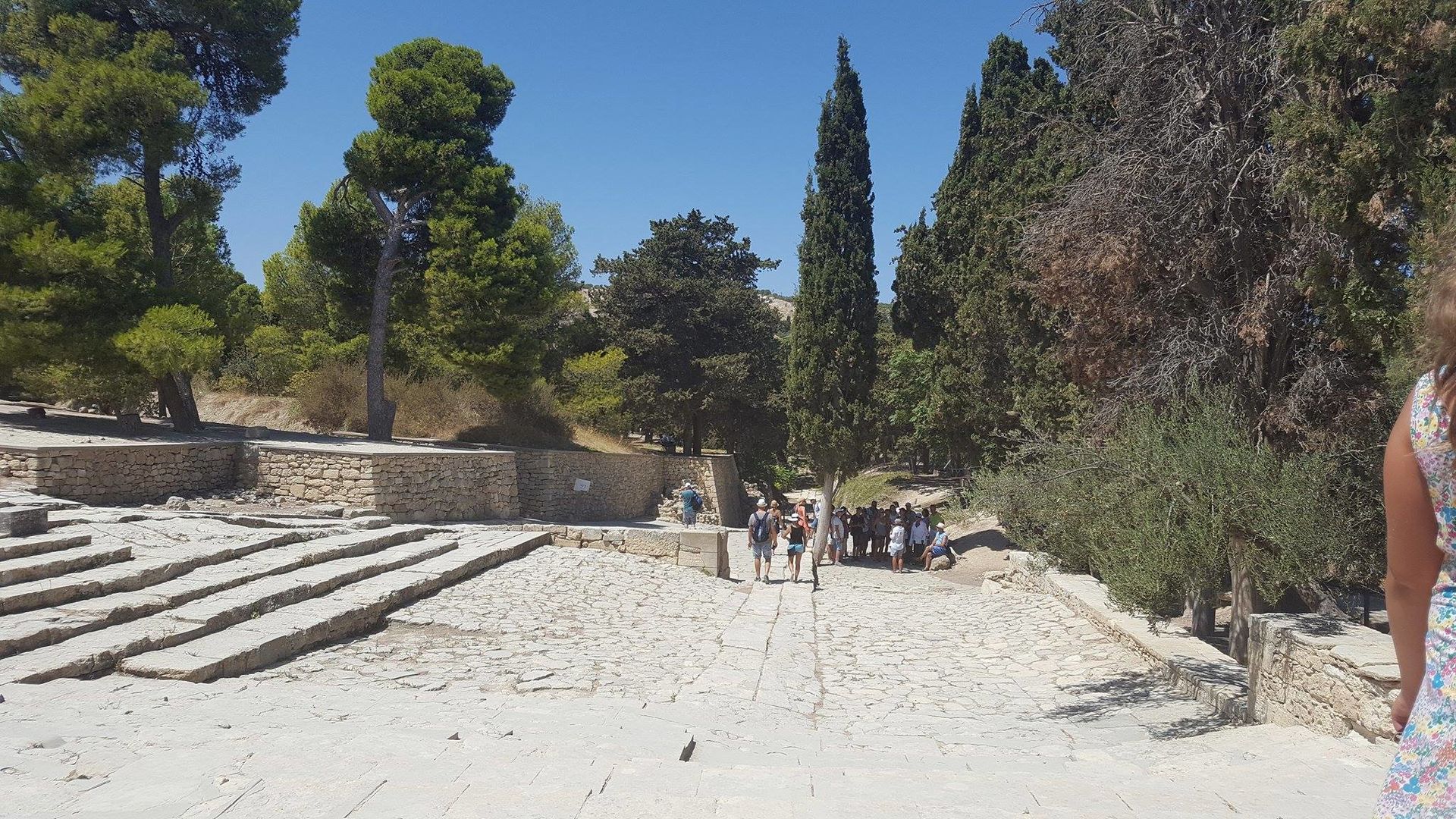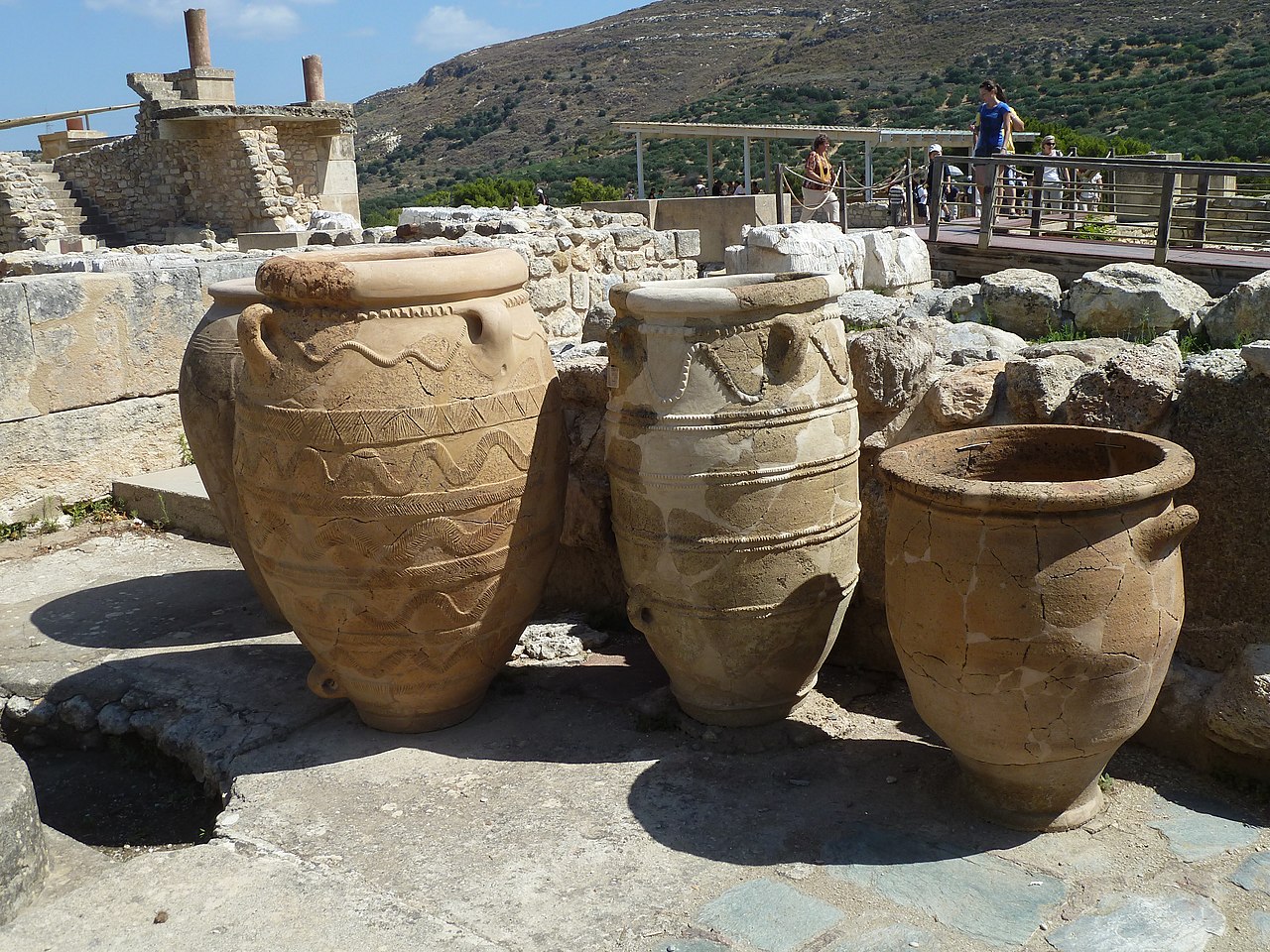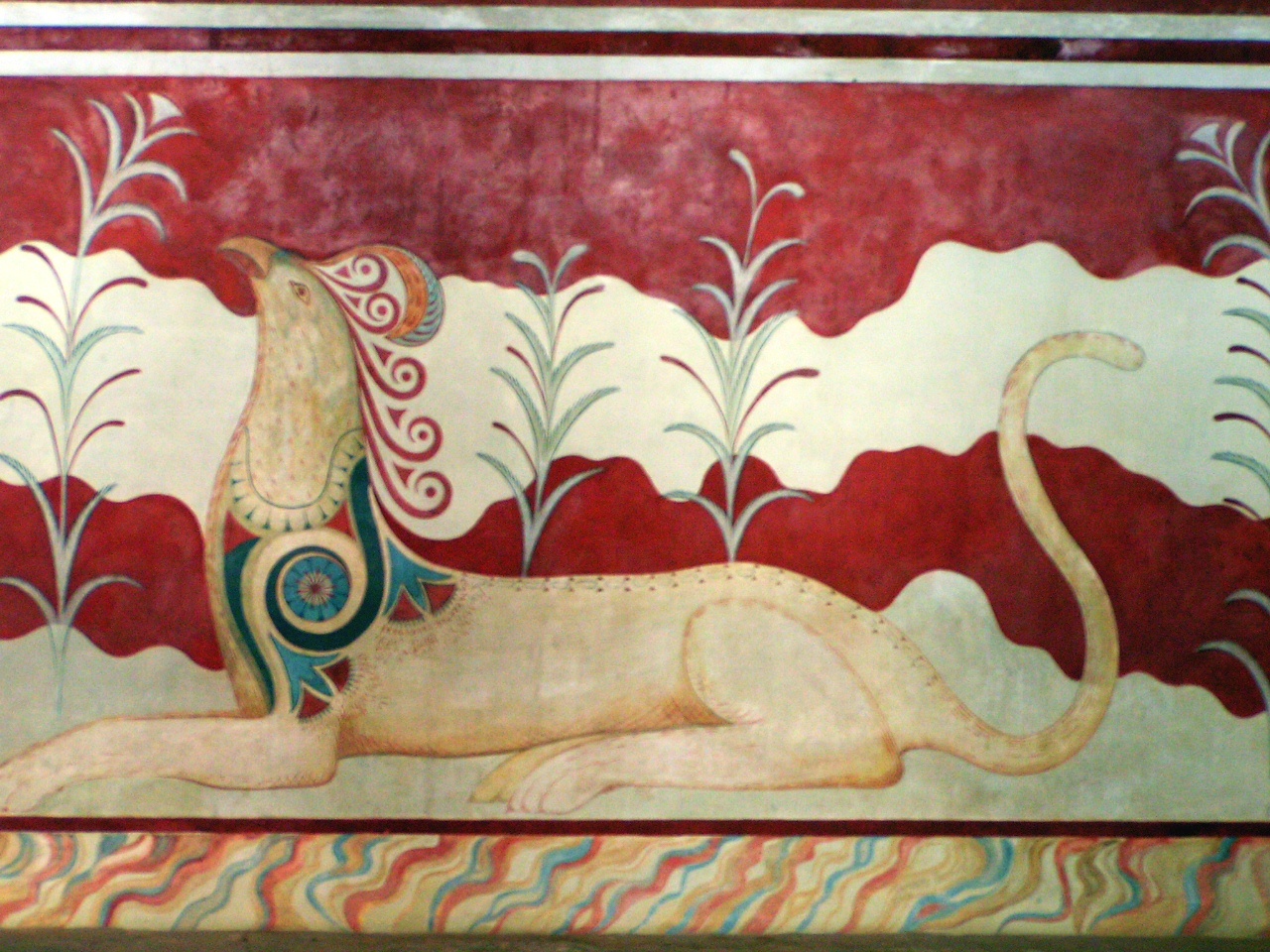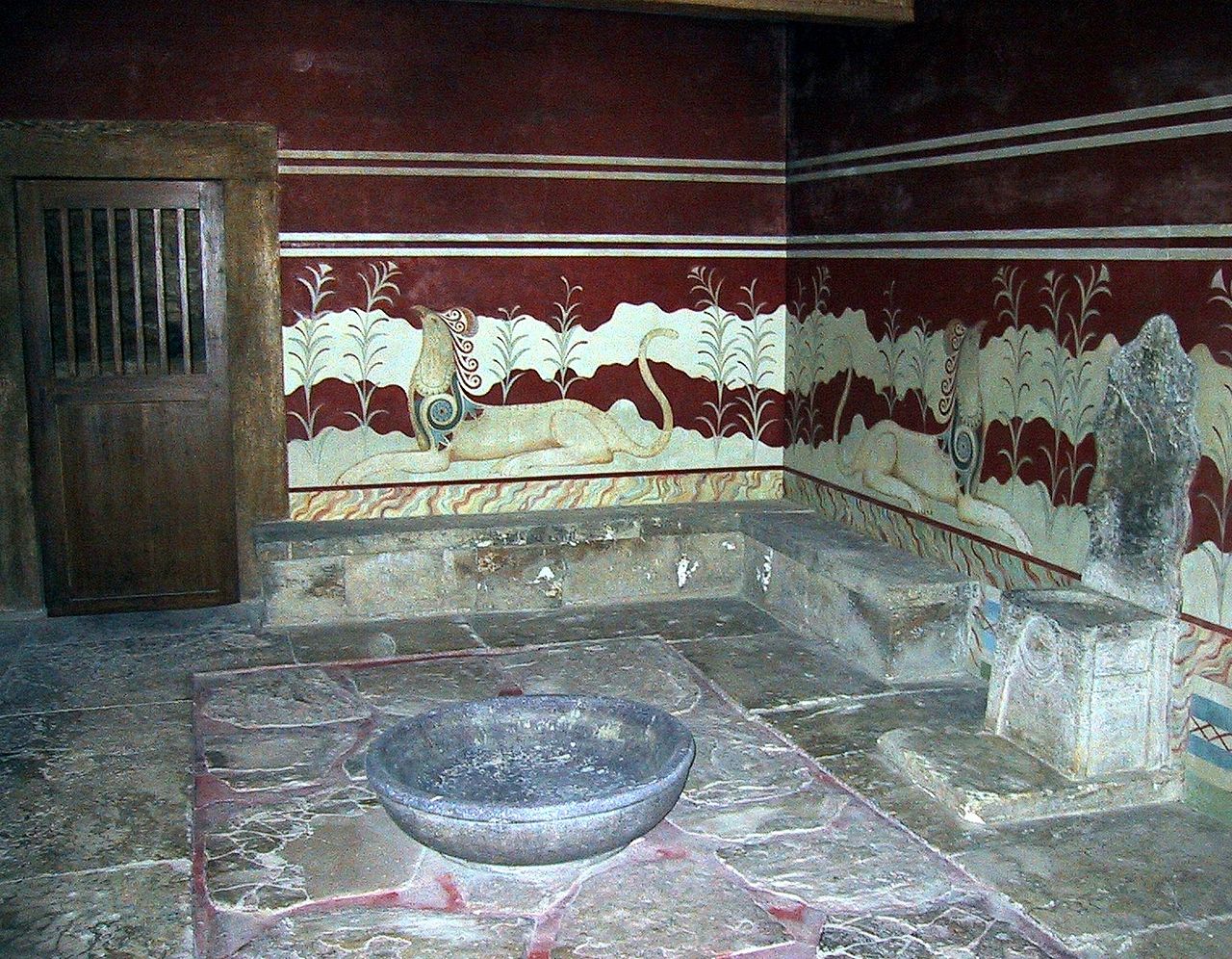Knossos is a Bronze Age archaeological site in Crete. The site is known for its association with the Greek myth of Theseus and the minotaur. It is located on the outskirts of Heraklion, and remains a popular tourist destination.
The site was first excavated by Minos Kalokairinos in 1877. In 1900, Arthur Evans undertook more extensive excavations which unearthed most of the palace as well as many now-famous artifacts including the Bull-Leaping Fresco, the snake goddess figurines, and numerous Linear B tablets. While Evans is often credited for discovering the Minoan Civilization, his work is controversial in particular for his inaccurate and irreversible reconstructions of architectural remains at the site.
Knossos, is one of the most significant and captivating remnants of the Minoan civilization, Europe’s first advanced culture. Spanning over 9,000 years of history, Knossos is considered the largest and most elaborate Bronze Age site on the island, serving as the administrative and ceremonial center of the Minoan civilization.
The site’s highlight is the grand palace of Knossos, a labyrinthine complex known for its unique architecture and intricate design. The palace, attributed to King Minos of Greek mythology, was excavated and partially reconstructed by British archaeologist Sir Arthur Evans in the early 20th century. The restoration, though controversial in its accuracy, has allowed visitors to envision the grandeur of this ancient civilization.
Knossos boasts an array of architectural features that hint at the advanced engineering skills of the Minoans. Its multistory structures, vibrant frescoes, grand courtyards, and sophisticated plumbing system provide valuable insights into the daily life and societal organization of this once-thriving civilization.
Throughout its history, Knossos underwent several periods of expansion, destruction, and reconstruction. Excavations have unearthed evidence of violent events, such as the eruption of Thera (Santorini) and earthquakes, which eventually contributed to the decline of the Minoan civilization around 1450 BCE.
Aside from the palace, the site encompasses a plethora of artifacts, pottery, and religious symbols, which reflect the religious practices and artistic achievements of the Minoans. The symbol of the Minoan civilization, the enigmatic bull, is found throughout the site, indicating its cultural and religious significance.
Today, Knossos stands as a prominent archaeological site, drawing historians, archaeologists, and curious travelers from all over the world. Its mystique, coupled with the breathtaking Mediterranean backdrop, offers a fascinating journey into the distant past, shedding light on a civilization that left a profound impact on European history and continues to inspire our understanding of ancient cultures.
